
Being in the know about the chemical and natural options for how to clean a patio will stand you in good stead throughout warmer weather when most time is spent outdoors.
Various cleaning methods can be employed to achieve a pristine patio, including using harsh commercial cleaners, raiding your pantry for natural patio cleaning solutions, or pressure washing to name a few.
Each of the six methods featured in this guide has its own set of benefits and considerations, our industry experts reveal, as they share professional advice for picking the best method for this essential outdoor cleaning task.
6 ways to clean a patio
1. Pressure washing

Utilizing a pressure washer is a popular method for cleaning patios, effectively removing dirt, grime, and mildew with high-pressure water spray. This cleaning tip is particularly efficient for large areas and can significantly reduce cleaning time.
Bryan Clayton, CEO of GreenPal, says, 'If your patio has years of grime or algae buildup, nothing beats a good pressure wash. But here’s the deal – it’s not just about blasting away. The PSI of the machine and the nozzle tip you’re using are everything. A 1500 PSI electric is fine for light stuff, but if you’ve got thick gunk, go for a gas-powered 3000+ PSI machine with a Honda engine.'
Other advice for pressure washing a patio includes starting on a low-pressure setting and testing the cleaning solution first. Caution is necessary as excessive pressure can damage certain surfaces, such as wood or older, fragile stones. It's advisable to test a small, inconspicuous area first and adjust the pressure settings accordingly.
Clayton adds, 'Start with the widest fan tip and only step down if needed – the finer the spray, the more aggressive it is. I learned that one the hard way, literally destroying terra cotta pots by going too hard!'
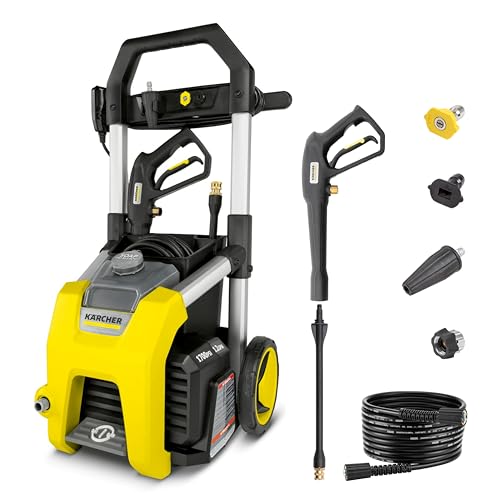
With a lightweight, four-wheeled design and a 20-foot thermoplastic hose, this bestselling pressure washer is easy to maneuver and get that patio sparkling. A 0.5 gallon onboard soap applicator and turbo option for extra power also make cleaning easy. Plus, a two-year warranty provides added peace of mind.
2. Manual cleaning without a pressure washer
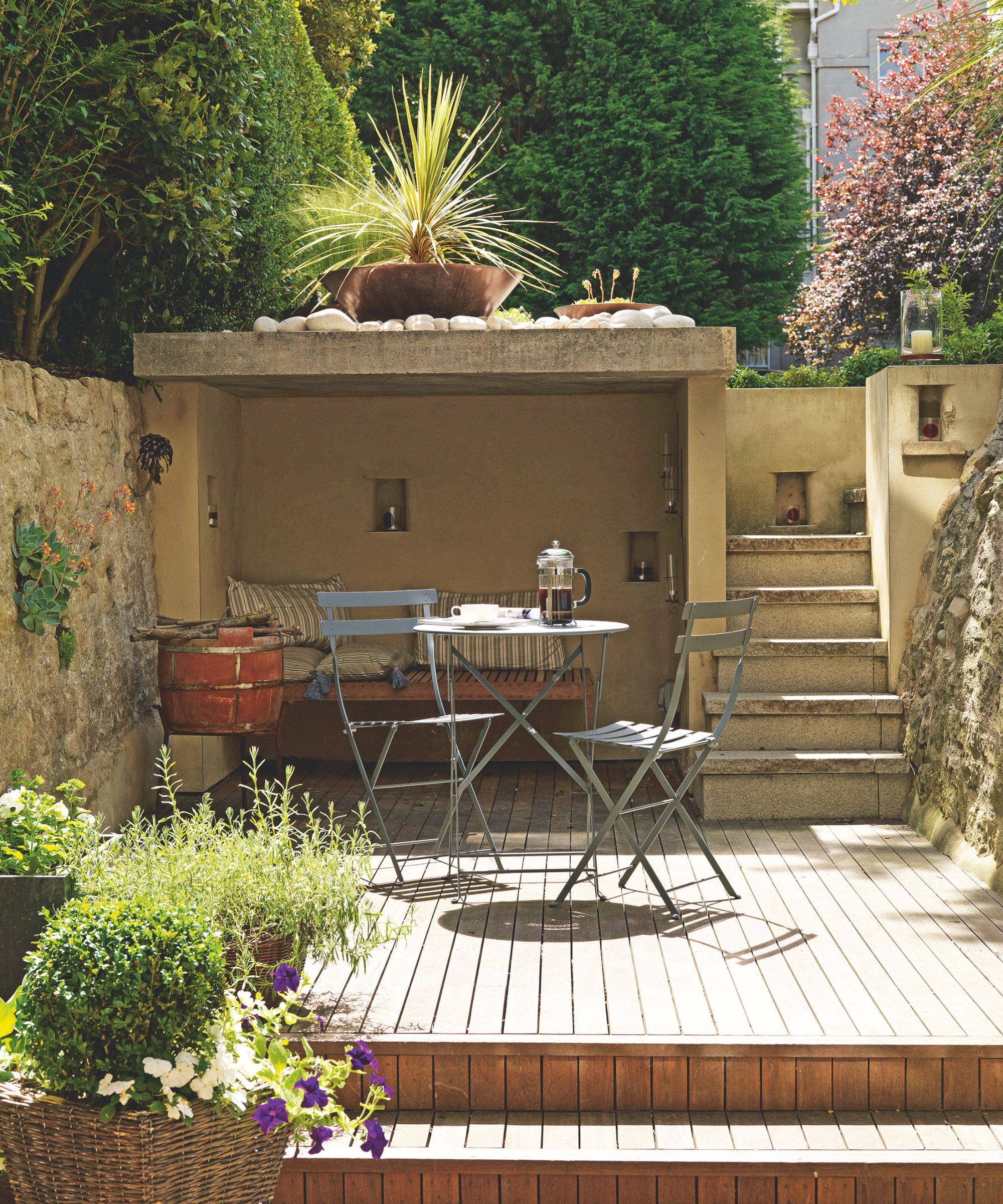
For those without access to a pressure washer or who prefer a gentler approach, cleaning patio pavers without a pressure washer involves using a stiff-bristled brush, warm soapy water, and elbow grease to scrub this outdoor surface.
Muffetta Krueger, founder of Muffetta's Housekeeping, says, 'When you have a smaller patio or if you want to avoid the cost and hassle of using a pressure washer, manual cleaning can be an effective alternative. It's also great for delicate surfaces.
'My top tip would be to use a broom to sweep away all the loose dirt and debris before scrubbing. Opt for a stiff-bristled brush for concrete or stone surfaces to get a deep clean without damaging the material.'
Karina Toner, operations manager at Spekless Cleaning, adds, 'One of the things people with clean patios always do is sweep properly to prevent unwanted buildup. Aim to use a stiff-bristled outdoor broom at least once a week.
'For stubborn dirt, hose it down and use a push broom for a deeper clean. I like the O-Cedar Angle Broom, available from Amazon, – it's a heavy-duty broom with firm bristles that make clearing dirt and debris easy.'
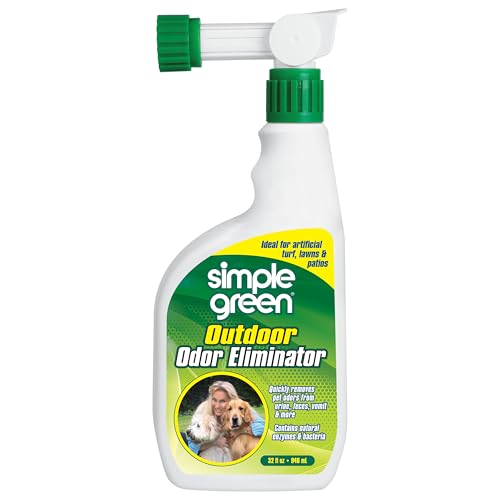
Cleaning pro Muffetta Krueger recommends this outdoor spray, which is safe to use on patios. She says, 'This product is non-toxic, eco-friendly, and works wonders for removing dirt, stains, and mildew from patio surfaces. It’s safe for use around plants and pets, which makes it a must-have for patio cleaning.'
3. Commercial chemical cleaners
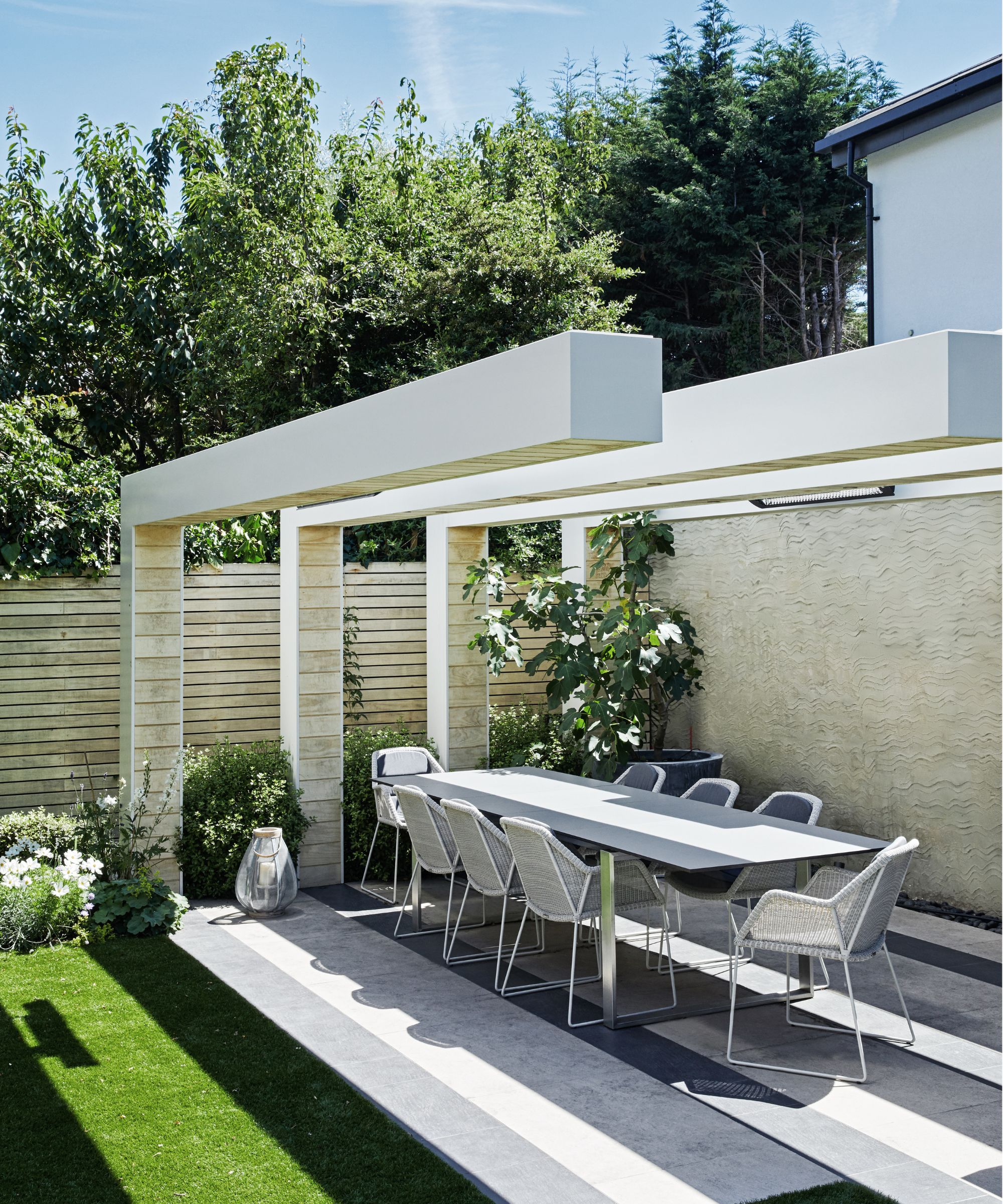
Commercial chemical cleaners are formulated to tackle tough stains, algae and get rid of moss on your patio. They offer a convenient solution, but besides the application, they require a waiting period before needing to be fully rinsed away.
Steve Evans, owner of Memphis Maids, says, 'When it comes to selecting commercial chemicals, pay attention to the type of issue you have. Is it mold? Is it just dirt? Are your floors stained? Are you going to use this cleaner with a pressure washer or just with a broom? Follow the instructions, including diluting to the exact amount suggested.
'For moss, mildew or algae, Wet & Forget's Outdoor Stain Remover, available from Amazon, is a good option. Wait 15 minutes after use, then rinse with plenty of water. For most other stains, Simple Green is a brand you can trust.'
Read how our content editor, Chiana Dickson, used Wet & Forget spray to rid their patio of moss. While effective to use, it's important to handle chemicals with care, following the manufacturer's instructions to protect both the patio material and surrounding vegetation. Additionally, consider the environmental impact, as runoff can affect local ecosystems.
Clayton adds, 'The only time I’d lean on chemicals is when you’ve got really bad mold or algae that just keeps coming back. But even then, use sparingly and only when runoff won’t hit plants.'
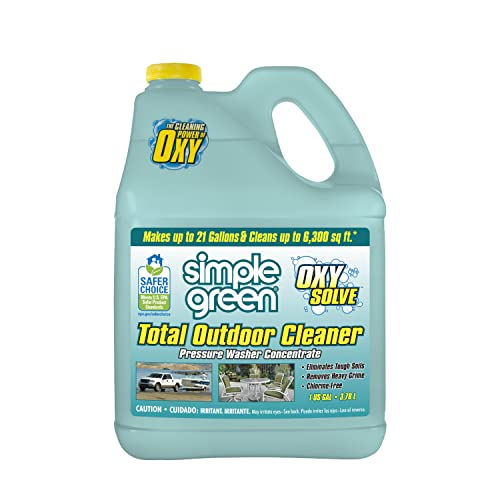
Cleaning expert Steve Evans recommends this commercial cleaner which is ideal for use with a pressure washer. He says, 'Simple Green is a well-known brand I trust. This cleaner works really well – plus, because it’s a concentrate, it lasts forever. When using, apply first with a low pressure setting, wait for at least five minutes, then use a higher pressure to rinse.'
4. Natural cleaning agents

For an eco-friendly patio cleaning alternative, natural cleaning agents like white vinegar or baking soda can be employed. These non-toxic home essentials are effective in removing mild stains and algae without introducing harsh chemicals into the local environment.
Jeremy Yamaguchi, CEO of Cabana, says, 'If you have pets, kids, a pool, or an edible garden nearby, it's wise to use natural cleaning agents for safety purposes. Just make sure to research the material of your patio to learn about which natural cleaning agents are good and safe to use. Generally, vinegar and baking soda tend to be successful ingredients for a task like this.'
Arm and Hammer Baking Soda, available at Walmart, is a brand known for its quality. It's ideal if you often clean with baking soda, or if you want to mix it with vinegar to create a paste for tougher stains. For vinegar, pick up an affordable 64 fluid-oz bottle of Great Value Cleaning Vinegar, also from Walmart.
Krueger adds, 'Use a mixture of baking soda and vinegar to clean stubborn stains or mildew, making sure to test on a small area first. Avoid using natural agents on delicate stone patio surfaces, as they can cause etching over time.'
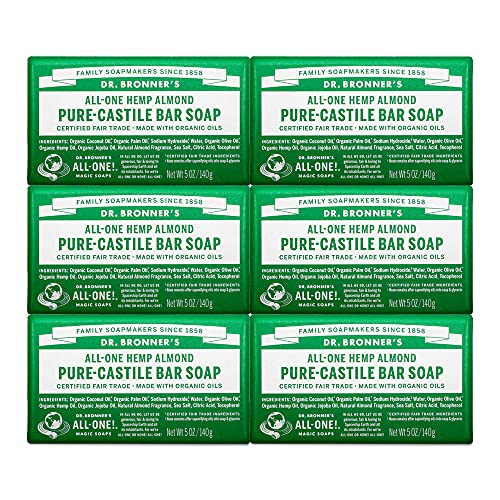
Cleaning expert Muffetta Krueger recommends this natural cleaning bar soap, which has no added chelating agents, dyes, whiteners, or synthetic fragrances for cleaning a patio. She says, 'I swear by this versatile and powerful cleaner made from organic ingredients. It's perfect for washing off grime and stains without compromising the integrity of your patio. It also has a lovely scent that leaves your patio smelling fresh.'
5. Steam cleaning

Steam cleaning uses high-temperature steam to break down dirt and grime, offering a chemical-free and environmentally friendly method.
This approach is gentle on surfaces, reducing the risk of damage compared to pressure washing. Steam cleaning also sanitizes the area, eliminating bacteria and the risk of mold building up.
Toner says, 'Cleaning with a steam cleaner is a great chemical-free way to lift dirt and grime while sanitizing the surface. My main tip would be to use yours on you patio with high heat to kill bacteria and loosen dirt. Also, since steam can break down grime gradually, go over tough stains multiple times.'
Steam cleaning may be less effective on heavily soiled patios, or sealed ones. Toner adds, 'I'd avoid using steam cleaners on sealed or painted patios – the intense heat may damage protective coatings.'
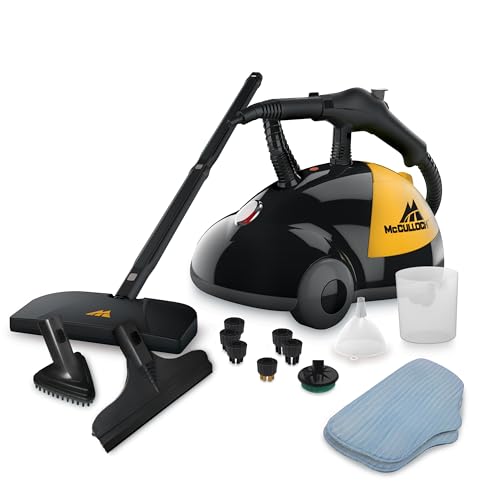
Cleaning pro Karina Toner recommends this top-quality steam cleaner, which is suitable for multiple surfaces including granite, laminate, ceramic tile and sealed wood. It also has 18 attachments, a large 48-ounce water tank capacity, and provides up to 45 minutes of steam. She says, 'This model has strong steam pressure and multiple attachments, making it versatile for patio cleaning.'
6. Professional cleaning services
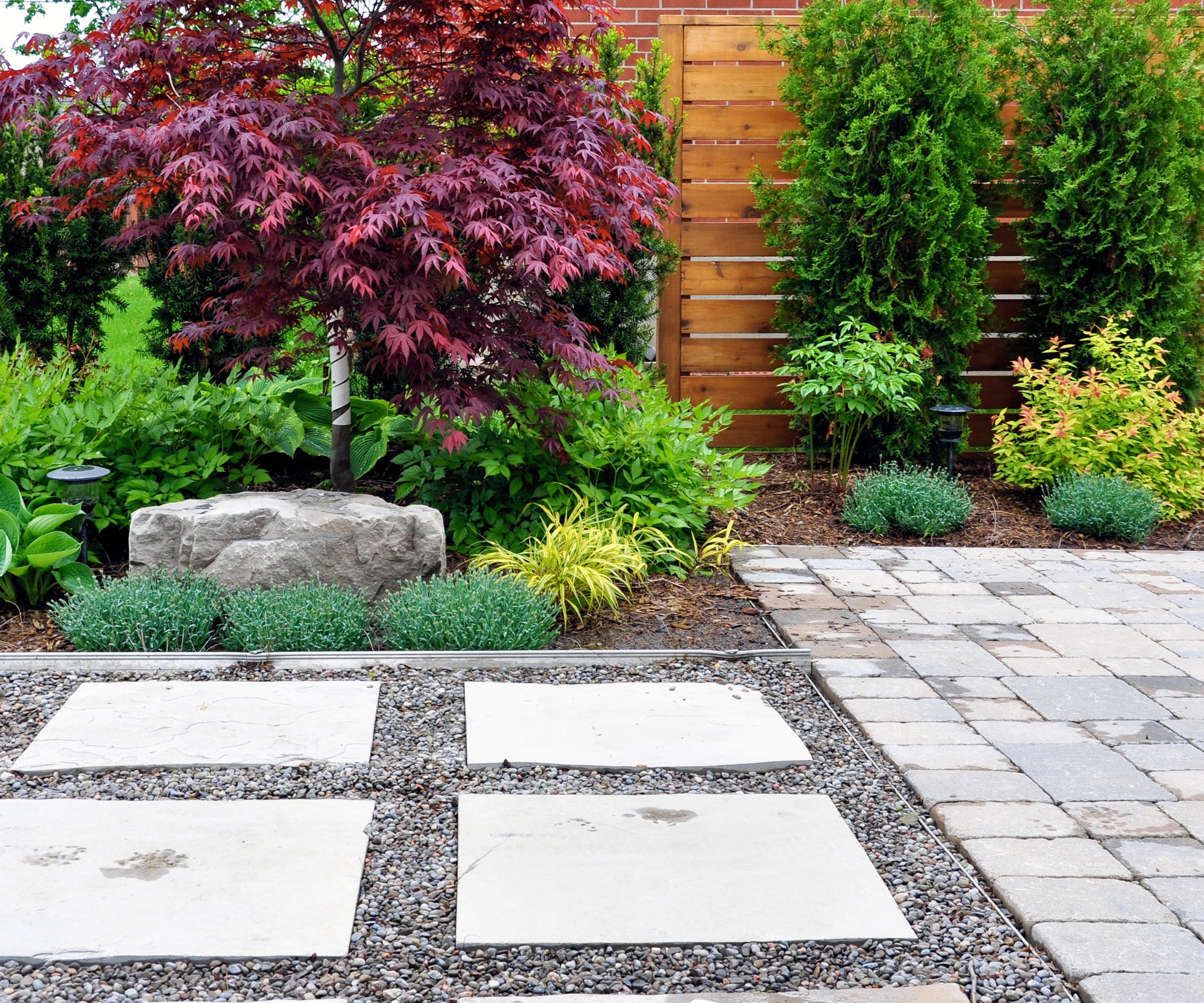
Hiring professionals can ensure thorough and efficient patio cleaning, especially for extensive or particularly dirty jobs. Professionals have access to industrial-grade equipment and expertise in handling various surfaces and stains.
Yamaguchi says, 'This might be the way to clean a patio for a number of reasons. Perhaps you have discovered mold – since mold can be hazardous, it’s often best to let the pros handle it. Perhaps you have physical limitations or can’t get it cleaned by a certain deadline, logistically. Maybe you just don’t want to do it yourself, and that’s reason enough!'
While this option is more costly, it saves time and effort, and the results are often more durable. Of course, it's important to research and select a reputable service for the best outcome.
Yamaguchi adds, 'To know you're hiring a good company, scour their reviews and talk to people you know who've hired them before if possible. Make sure their pricing is clear and that they communicate well.'
If you are suffering an injury, fatigue, chronic pain or illness but would like to learn how to clean a patio without harming yourself in the process, use adaptive pacing when cleaning to avoid a flare.
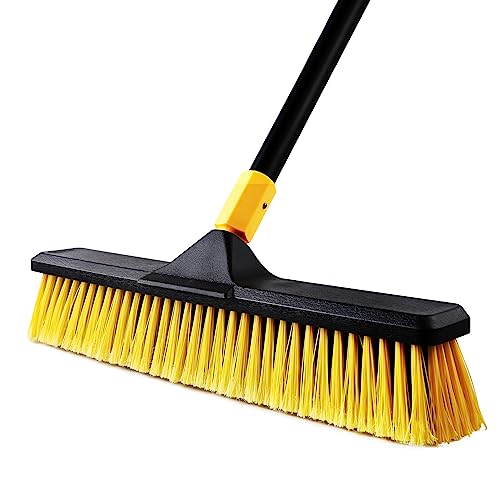
If you've decided to call the pros, this sturdy, stiff-bristled broom is ideal for keeping dirt, debris and leaves off your patio while you wait for the professionals to arrive. With a width of 18 inches, it sweeps a large area at a time, and its pole length can be adjusted to suit your height, sparing any back pain.
Meet the experts
FAQs
How often should I clean my patio?
Regular maintenance, such as sweeping and prompt stain removal, should be performed weekly to prevent buildup. A more thorough patio cleaning, whether through pressure washing, manual scrubbing, natural or chemical methods, is recommended at least once or twice a year, typically during spring and autumn.
Can I use bleach to clean my patio?
Bleach can be effective in removing stains and algae; however, it should be used with caution. Dilute it properly and avoid runoff into garden areas, as it can harm plants and wildlife. Always wear protective gear and rinse the area thoroughly after application.
How often should I reseal my patio?
The frequency of resealing depends on the material. Concrete and stone patios generally need resealing every two to three years, while wood decks often require a fresh coat annually. If water no longer beads on the surface or the color has started to fade, it’s time to reapply a sealant. Regular sealing extends the life of your patio, makes it easier to clean, and makes it more resistant to weathering.
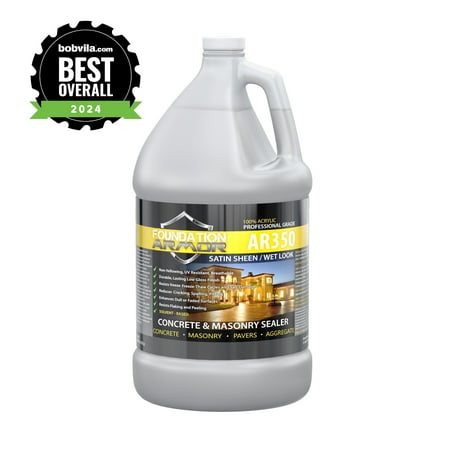
This versatile sealant for poured concrete, broom-finished concrete, stamped concrete, and concrete pavers enhances color while providing protection from moss and weeds. Always clean the surface first and allow it to dry completely before walking on it.
So there you have it – how to clean a patio using six different methods with their own unique benefits and considerations. The best patio cleaning method for you depends on factors such as the surface material, level of soiling, environmental considerations, presence of mold, and personal preference.
It's worth also being aware of what not to use when cleaning your patio, and these other common patio mistakes to avoid.







